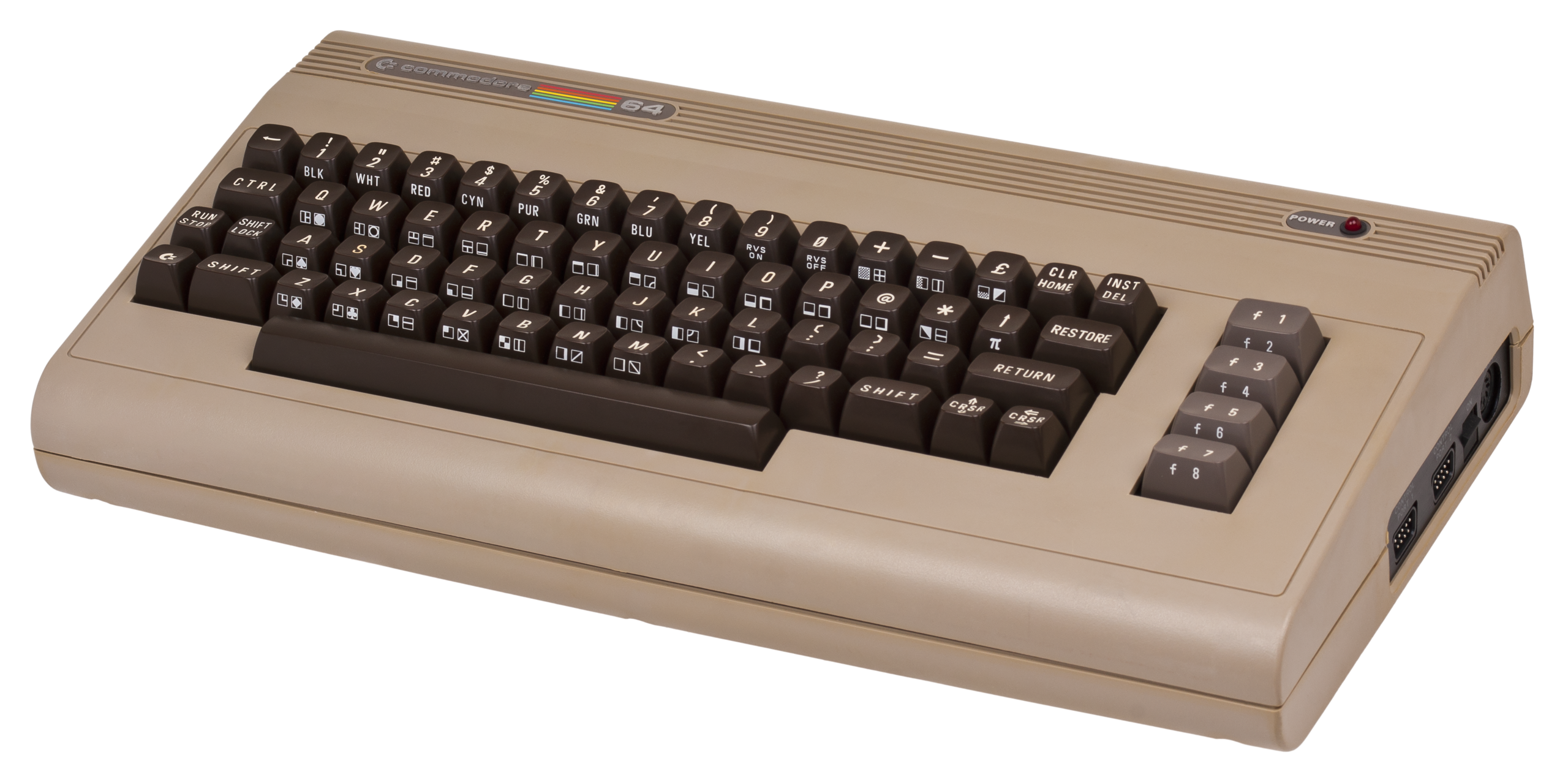PC Gaming
The first computer games
The first computer games were created at the start of 1960 on mainframe computers. These computers were usually housed in universities and, since only a handful of people could use them, it's hard to find any relevant information on them. Everything we know is that they were text based games and that the "player" could communicate with the computer via typewriters and, later on, keyboards.1 Then, with the start of the '70s, computer games became a more wide-spread phenomenon, although still limited.
The difficult start and the rise
Until the '80s pc games were just a nice add on to a platform used to work, consoles dominated the gaming market with Atari on the lead. Then came the '80s and a lot of things happened: in 1981, Microsoft released MS-DOS wich became a popular gaming system; in 1982, commodore released his Commodore 64, wich became the best selling PC in history, and the whole console gaming market crashed in 1983 leaving his share of consumers to PCs. Computer companies, aware of console's struggles, took this opportunity wich aggressive advertising and by promoting their superior sound and graphical capabilities and the double "work and play" nature of the system. Many computer ads recited things on the line of: 'Why should I buy a video game system when I can buy a computer that will play games and do so much more?'2
Computer market started to grow really fast and kept afloat many companies hurt by the crash of consoles. In 1985, Nintendo released the NES in North America resurrecting the console market and ending the monopoly of PCs, whereas a different story happened in Europe where the PC market kept growing.
One of the major differences in PC markets were between Japan and Europe. To accomodate Japanese text, they had higher resolution, wich translated to better graphics and better sound (thanks to their superior sound boards). During the 16 bit era in Europe the Commodore Amiga and Atari ST dominated the market while in Japan where popular the PC-98, Sharp X68000 and FM Towns.
IBM's Dominance
By 1987 the computer gaming market had grown so quickly and wide that the former business company IBM had become the most important producer of platforms for computer games. More than a third of the games sold in North America were for the IMB PC, even outselling those for the popular Commodore 64, since the use of EGA video cards ment that an inexpensive PC had better looking games than Commodore 64's.
In 1989, VGA graphics appeared, meaning that finally PC graphics could be better than the ones on the Amiga, even if held down by poor speakers quality, and the increasing adoption of the mouse meant that developers could adopt more high quality interfaces in their games.
The next jump in quality was with the introduction of FM synthesis sound and 24 bit color graphics. Even if Yamaha had started making FM synth boards in the early '80s, until the start of the '90s that they didn't became wide spread in the European and American market.
In 1990, then, DOS became the major gaming OS holding 65% of the market alone, even if both IBM and Apple were trying to avoid customers thinking to their platforms as "gaming machines". In this period full 3D graphics games were starting to being developed with Accolade developing Day of the Viper in 1989 and id Software publishing their Wolfenstein 3D in 1992, the game that popularized the first person shooter genre and the first of a long streak of successes for the company.3
External Links
- [Visited on 04/11/2014] Waterloo university Mainframe games article
- [Visited on 05/11/2014] Article on PCs in the '80s
- [Visited on 05/11/2014] History of games Wikipedia
- [Visited on 06/11/2014] Commodore 64 picture
All images are fair use intended.
